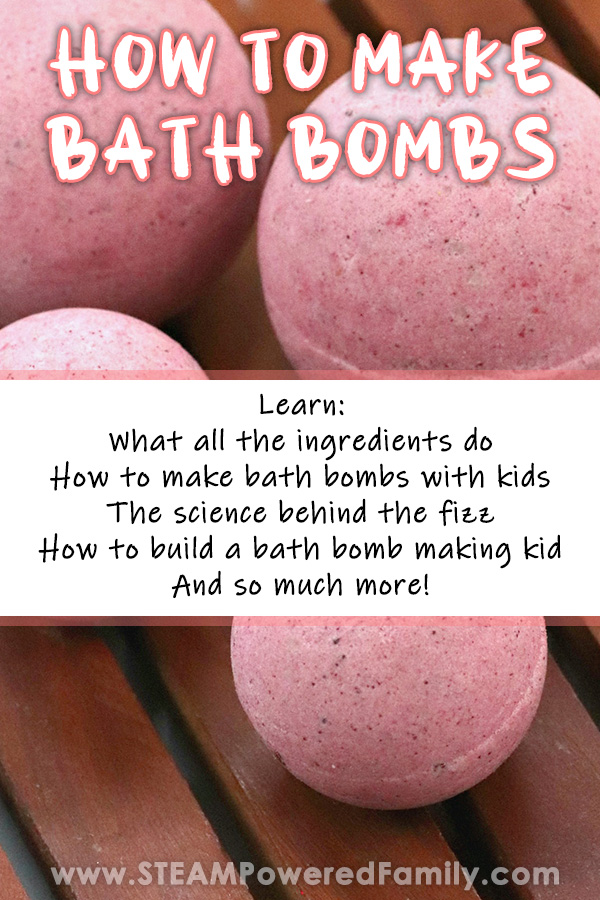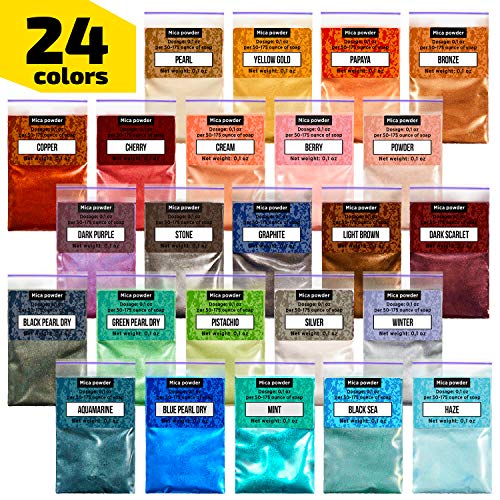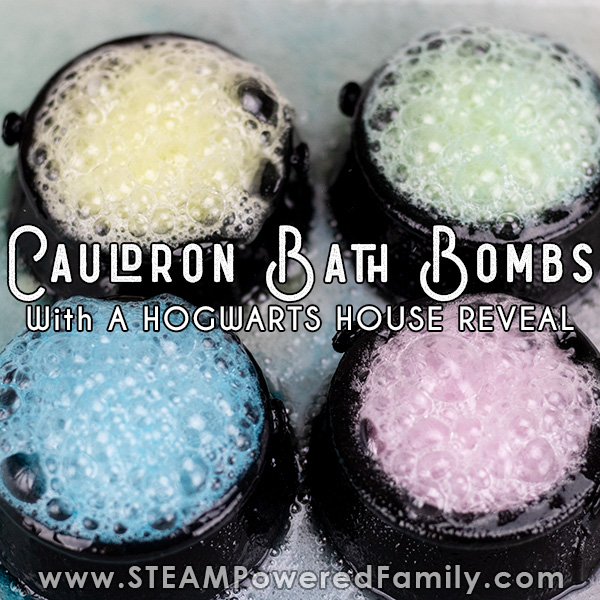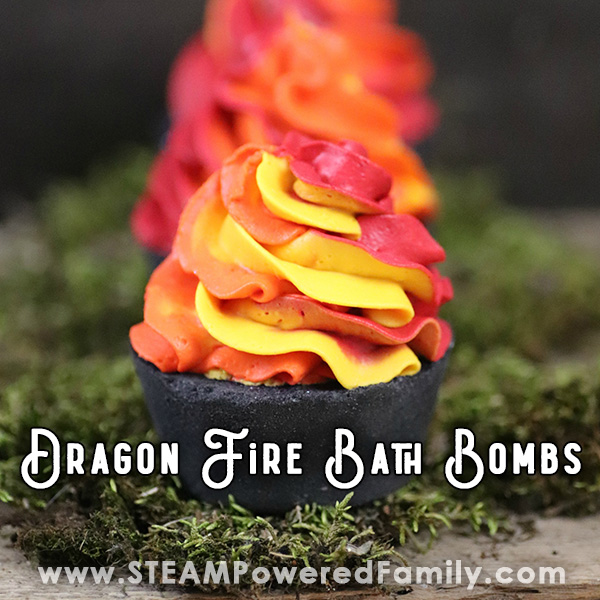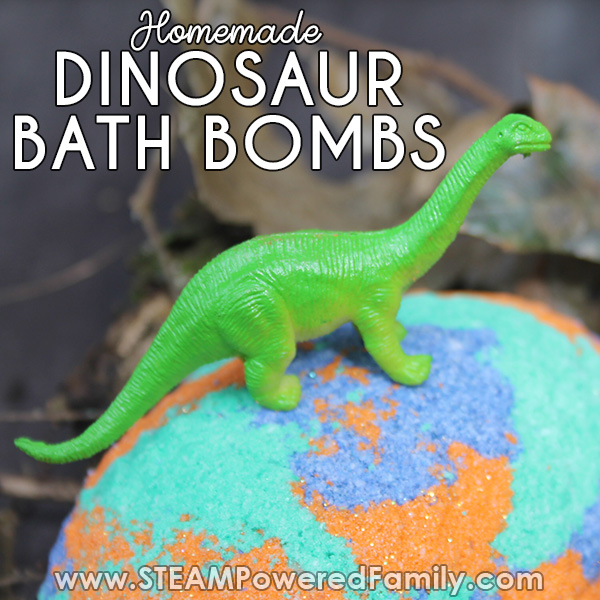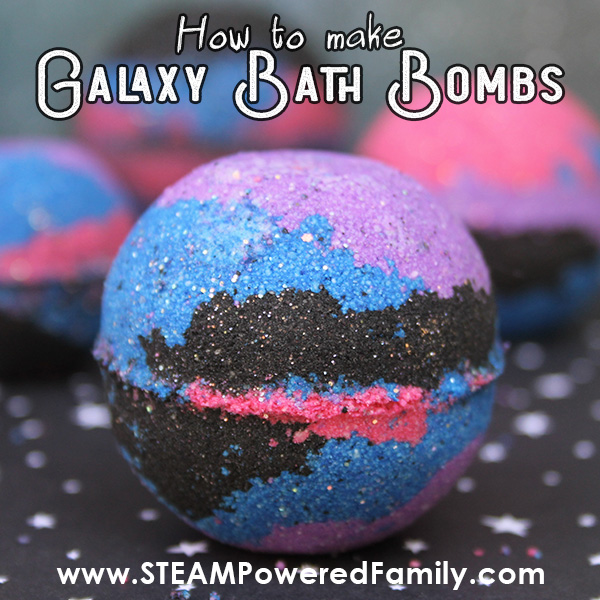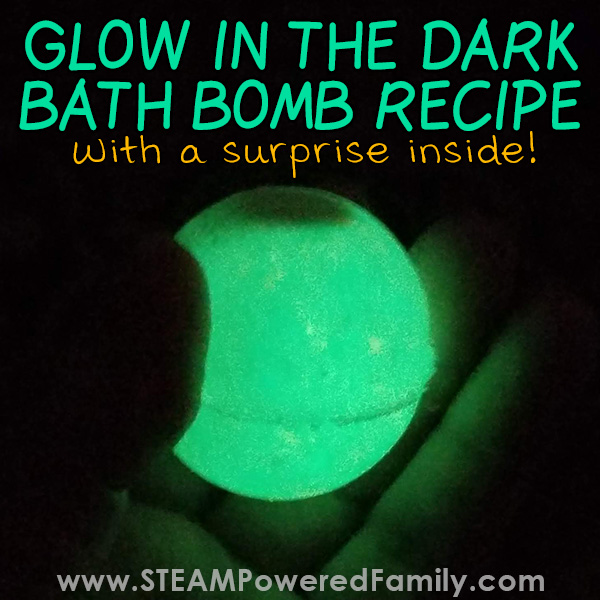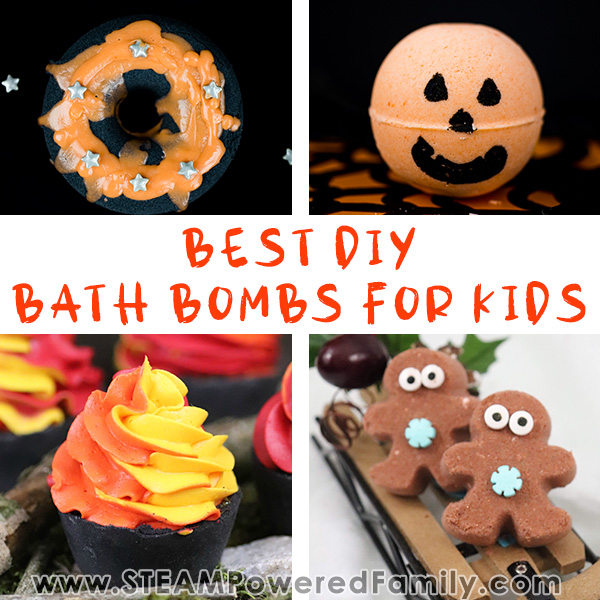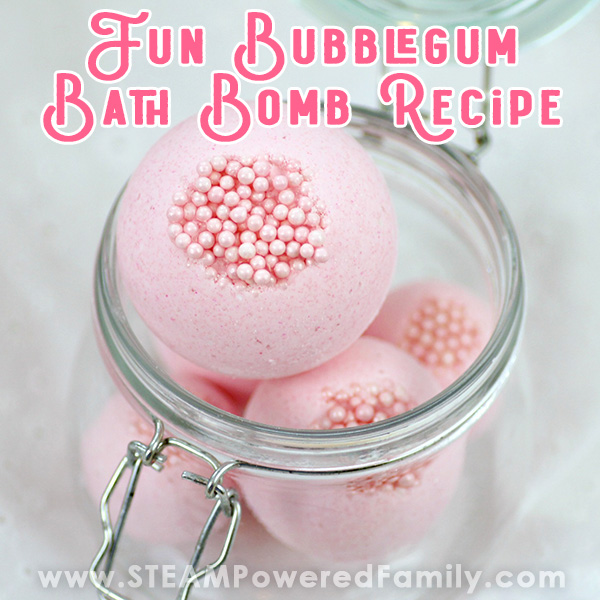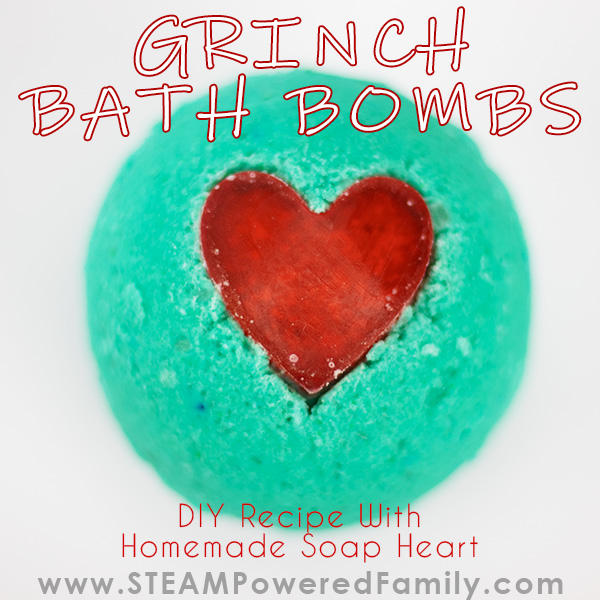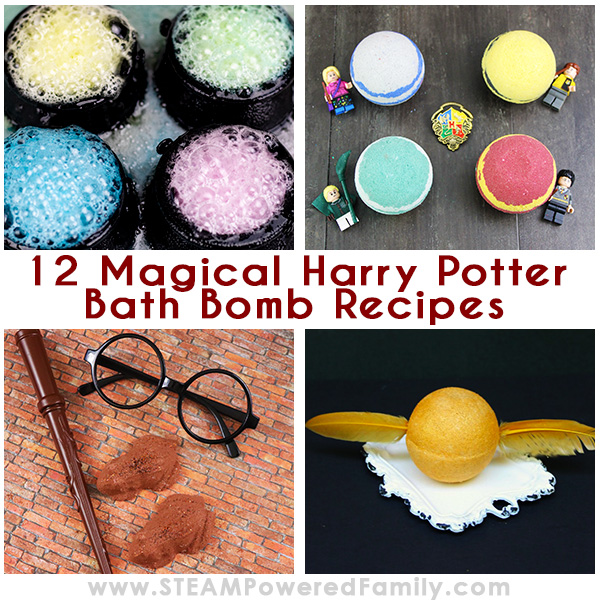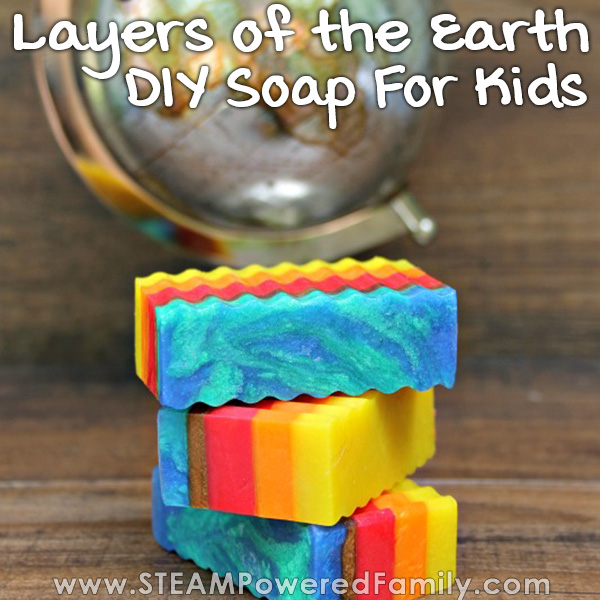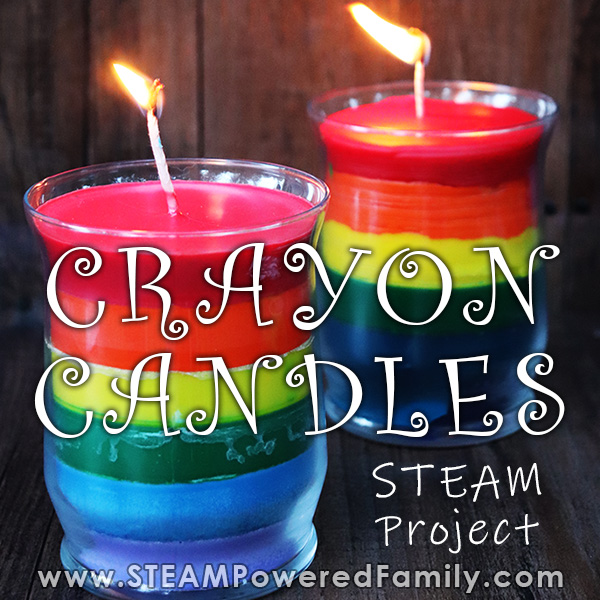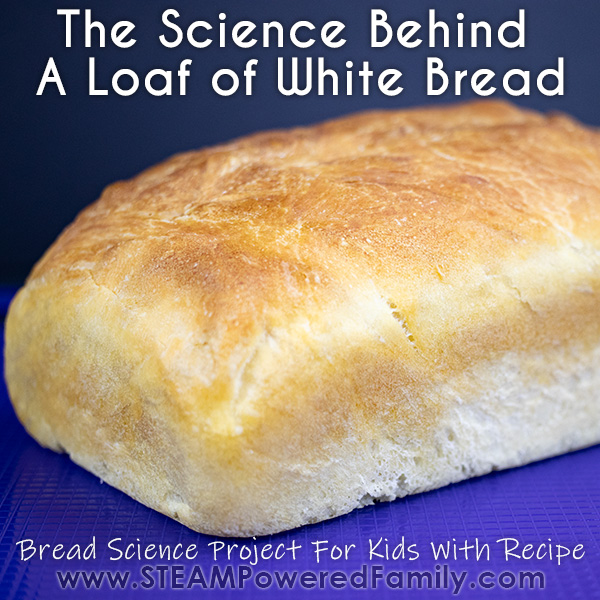How To Make Bath Bombs
Are you ready to make bath bombs but not sure where to start? We’ve been making bath bombs for a few years now and LOVE it! It’s a great way to involve the kids in some fascinating hands on chemistry lessons. Plus people of all ages love using bath bombs, making them a wonderful project idea.
DIY Bath Bombs – Questions Answered
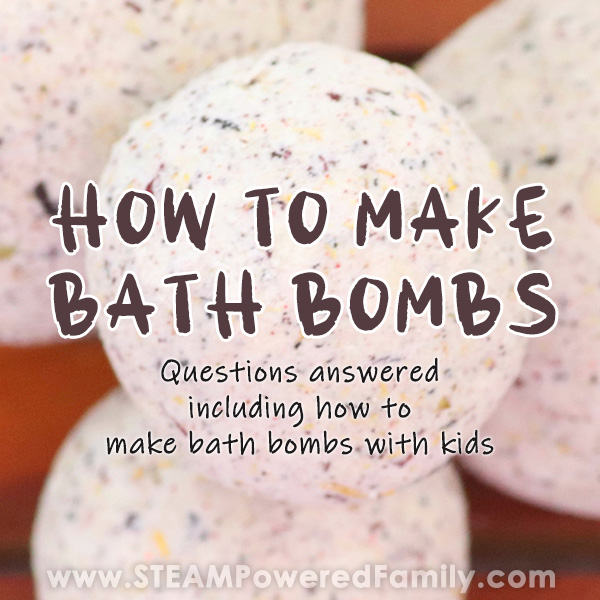
Disclaimer: This article may contain commission or affiliate links. As an Amazon Influencer I earn from qualifying purchases.
Not seeing our videos? Turn off any adblockers to ensure our video feed can be seen. Or visit our YouTube channel to see if the video has been uploaded there. We are slowly uploading our archives. Thanks!
Bath bombs are all the craze with everyone enjoying the fizzy bath time fun of bath bombs. Enterprising tweens and teens especially love making their own Homemade Bath Bombs from scratch. It is a fantastic DIY project for teens and a great, practical application of chemistry.
Ready to learn more? I’m sure you have lots of questions. Since we started making bath bombs and bath fizzies about 2 years ago we’ve had tons of questions. Finally, I have gathered up all those inquiries into one place. Let’s get started as we tackle all your bath bomb making questions!
Why make bath bombs instead of buying them?
Although you can buy bath bombs in the stores, there are a few reasons you might prefer to make your own bath bombs.
First, it is much cheaper to make your own bath bombs. It costs me about $1 a bath bomb to make them myself. If I buy them at the store they are anywhere from $5 to $15 each. That’s a massive savings!
Second, it is actually fun and not that hard once you learn all the tricks.
Third, learning how to make bath bombs is a fantastic STEM activity as kids work with measurements and chemistry to master their fizzy creations.
Fourth, bath bombs make incredible gifts that people love to receive.
And finally, it is an incredibly creative process that gets kids using their imagination and critical thinking skills. There is a huge sense of accomplishment when you slip into a warm bath with a bath bomb you made yourself.
Best of all, this is a zero waste creative project so you don’t contribute to any landfill waste when making your creations.
What is a bath bomb?
A bath bomb is a hard packed mixture of dry ingredients that effervesce or fizz when added to a warm bath. They are a special treat that is loved by adults for it’s fragrant, luxurious bath experience, and by kids for its bubbly, fizzy fun as it dances around the bath water.
What is the science behind a bath bomb?
To turn bath bomb making into an educational activity, and to increase your successes, you need to understand the science behind the beloved bath bomb fizz.
Bath Bombs are a simple acid-base reaction between baking soda and citric acid (or another replacement acid which we will explore in a moment). In their dried, powdered form you can combine the acid and base and they will not react. We need to add the magical ingredient to trigger the chemical reaction, warm water!
We did a study showing how water temperature affects the fizz. You can read more about that here.
One of the results of the reaction between the acid, base and water is Carbon Dioxide gas (CO2) which is those wonderful fizzy bubbles.
Another fascinating science principle at work here is the role of the emulsifier, polysorbate 80. We all know oil and water don’t mix. That’s until you add an emulsifier. This is a key bath bomb ingredient because without it all your oils, colours and scents will float on top of your bath water in a kind of scummy layer that sticks to everything. Make sure you add the emulsifier for a luxurious bath experience and easier clean up after the bath!
What does each ingredient do?
There are many different bath bomb recipes out there, but most share the same common core ingredients. Let’s explore a few of these ingredients.
Citric Acid – The most common acid used in bath bomb making is Citric Acid, however powered buttermilk can also be used and Cream of Tartar is also a common dry acid to add to the mix. This ingredient is critical for our chemical reaction to create the fizz.
Sodium Bicarbonate – Also known as baking soda, this is the base in our all important acid-base chemical reaction which gives us our fizz.
Epsom Salts – Epsom Salts are known for helping with sore muscles, aches and pains and restless leg syndrome. Although not required, they are a nice addition to bath bombs.
Coconut Oil – Coconut oil is the binding agent that holds all of those dry ingredients together. Since it is an oil, it does not trigger the chemical reaction. I always use a good quality solid coconut oil, melt it to make the bath bombs, then when it solidifies again it makes for nice hard bath bombs.
Essential Oils – I like to use a variety of essential oils in my bath bombs based on our needs and what is drawing us in each time. Really, which essential oil you use is based on your preference and what scents appeal to you. Normally I focus on relaxing scents since our bath times are usually right before bed.
Colours – The easiest way to colour bath bombs is with mica powder. Although you can use a soap colourant, most of them are water based and will cause premature reactions in your mix. Mica is dry and will mix to create vibrant colours. Just remember a little goes a long way.
Polysorbate 80 – Polysorbate 80 is an emulsifier that helps the oils and colours in your bath bombs disperse more evenly in the bath water rather than pooling on top. It also prevents the the oils and mica from clinging to the tub and the bather. This is important as oil on the bottom of the tub can make it slippery. We all know oil and water don’t mix, which is why it is so important to use Polysorbate 80 when making bath bombs. You can see a demonstration of the emulsifying action of polysorbate 80 in our Moon Dough making project.
Sodium Lauryl Sulfoacetate (SLSA) – We don’t always add SLSA but sometimes it is a really nice addition for some extra foamy, bubbly action. SLSA is a surfactant that helps create a LOT of extra bubbles when used in bath bombs. This results in a bath bomb fizzy fun to kick off your bath but then a wonderful, fragrant, bubble bath after. Another big benefit of using SLSA is that it helps trap the fragrance of the essential oils, helping the wonderful aromas last longer.
Witch Hazel or Rubbing Alcohol Spray – These are used to help “wet” the mix. You want your bath bomb mix to be like wet sand, but sometimes it needs a little extra moisture to make that happen. A couple of sprays of these items can help you get the right consistency.
What do I need in a bath bomb making kit?
We make bath bombs all the time and although we like to change up our recipes and use a variety of ingredients there are a few core items that I will always have in my bath bomb making kit. Click the arrow on each ingredient for more details.
Mica Colorants
In addition to mica colorants, you can also use all natural plant based colours. Learn more about our experiments with all natural colours in our bath bombs here.
Bath Bomb Molds
There are a few options for bath bomb molds. The most common are clam style molds to make the traditional round bath bombs, but you can also use silicone molds. Learn more about silicone molds here.
How to pack a bath bomb mold
Learning the proper technique for using bath bomb molds is so important. Here is a quick video I posted that includes the important loosely heap approach, then press together, twist, tap and pop!
How to make bath bombs with kids
Safety is key whenever we involve kids in these activities. I highly recommend using safety goggles, gloves and possibly a face mask when mixing up bath bombs, especially if the kids are helping you. Citric acid can be irritating if it becomes airborne (which is easy if your kids are enthusiastic at their pours and stirring). Always use common sense and protect yourself. And of course, kids should always do this project under responsible adult supervision.
With tween and teens, feel free to tackle any technique that strikes their fancy. Although using the clam style bath bomb molds can be a bit tricky, they should be able to figure it out. With younger kids, it might be easier to make silicone mold bath bombs. Then you can also have kids paint their bath bombs for a special and unique bath bomb making project.
How many does it make?
I get this question so often! How many bath bomb does this recipe make? Well here is where things get tough because it really depends what size bath bomb molds you are using! My bath bomb mold kit came with three different sizes, so I usually make a variety of sizes. Not to mention if you use silicone molds or muffin tins it gets even harder to provide a clear answer. This makes it so hard to answer the question, “how many does the recipe make?” Suffice it to say that in general these recipes will make anywhere from 4 to 12 bath bombs on average. I normally go with a smaller bath bomb mold so I get closer to a dozen bath bombs each time. But my kids like to use bath bombs every day if they can, so I need to make my batches last.
How do you use a bath bomb?
Ready to use your bath bomb? Run yourself a nice warm bath. Remove any wrappers or packaging from your bath bomb. Now add your bath bomb to the warm water and relax as it fizzes and bounces around your tub leaving a fragrant bubbly experience in its wake.
If you have some colours from the bath bomb left on the sides or bottom of your bath tub, simply rinse with fresh water or use a little bit of regular bath tub cleaner to remove the residue.
Storing and Gifting Bath Bombs
Once you have successfully made your gorgeous bath fizzies you are going to want to store them safely. It is best to keep them in an airtight container to protect them from moisture. Remember, any water, even humidity in the air will cause your bath bombs to start reacting, which means less fizz at bath time.
I prefer to use a glass container with a lid to store our personal bath bombs.
When gifting bath bombs I put them in reusable plastic bath bomb molds, or shrink wrap them in plastic. If you don’t have a way to shrink wrap, you can use a plastic gift bag and just make sure to tightly secure the top.
Troubleshooting DIY Bath Bombs
OK, so you dove in and made some bath bombs, but it totally failed. There are a few common errors faced when making bath bombs. Here are the solutions to some of your fizzy woes!
Bath bomb won’t fizz
This can happen with any bath bomb. You place it in the water and nothing happens. No fizz. Nothing. Nada.
First, make sure you are using warm water. Learn more about how water affects bath bomb reactions here.
Next, how old is your bath bomb? Bath bombs lose their effectiveness and should be used within 3 months for maximum fizz.
How have you been storing the bath bomb? If it hasn’t been kept sealed, humidity from the air may have caused premature reactions leaving your bath bomb inert.
If you made the bath bomb yourself, confirm that you didn’t forget any of the ingredients or make a mistake with your measurements.
Cracking and Crumbling Bath Bombs
If your bath bombs are crumbling you need more binding agent. The trick here is that the amount of binding agent you need varies based on the recipe and the weather. If it is really dry where you live, you will need more binding agent. You can increase the amount of coconut oil, or use a few sprays of Witch Hazel or Rubbing Alcohol to help wet and bind your mixture.
A great test when you are making your bath bombs is to grab your mix and press it into your hand, then drop the “clump” and see if falls apart. It should stay fairly well stuck in a clump.
Clumps, gaps and bits in the finished product
If your bath bomb has inconsistencies like weird clumps, uneven colouring, gaps, etc. it means you didn’t mix your bath bomb ingredients together enough. Use your hands and make sure all the lumps are broken down and everything is really well mixed together.
Colours are staining the tub
Try using less mica. A little really does go a long way. Also make sure you didn’t forget the polysorbate 80 which helps those colours mix properly with your water. Alternatively, you can try using a Water Soluble Liquid Colorant to color your bath bombs. Just use a little as it will cause your mix to start reacting.
Mix is sticking to the molds
It can be so incredibly frustrating when your mix sticks to the mold when you are making bath bombs. If you are using silicone molds, make sure the bath bombs are dry before removing them from the mold. If you are using clam style molds, loosely fill each side, then press them together. Tap the ends and sides until you feel the bath bomb move inside, then gently pop it out. If it is still sticking, your mix is too wet. Try adding a bit more baking soda or corn starch to dry it up a bit.
Bath Bomb is expanding
If your bath bombs are expanding while setting, this means the mixture is being exposed to water and the fizzy chemical reaction is happening prematurely. If you use a colorant or fragrance that contains water, this can cause the bath bomb mixture to fizz. Moisture on your hands can also cause premature reactions. Don’t forget that moisture in the air will also trigger a reaction. If you live in a humid climate or it is a rainy day, you might need to use a dehumidifier.
What are some recommended bath bomb recipes?
Phew! That was a LOT of bath bomb making chatter! I hope it addresses all your questions.
Happy Bath Bomb Making!
